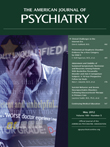Obsessive-Compulsive Spectrum Disorders: Refining the Research Agenda for DSM-V is a collection of review articles based on presentations from a research planning conference on obsessive-compulsive disorder (OCD) and related disorders held in preparation for the publication of DSM-5 in 2013. The conference was assembled by the APA in conjunction with the World Health Organization and the National Institutes of Health. The book examines whether OCD should remain in the anxiety disorders category for DSM-5 or whether it should be included in a new group of obsessive-compulsive spectrum disorders. These spectrum disorders are characterized by repetitive thoughts and behaviors and are systematically examined in relationship to OCD with regard to their shared phenomenology, comorbidity, familial and genetic features, brain circuitry, and treatment response.
In chapter 1, Fineberg et al. suggest that OCD serves as a “prototype” for a number of disorders distinguished by repetitive thoughts and behaviors. OCD has traditionally been diagnostically categorized with anxiety disorders because of a model that emphasizes anxiety generating obsessions and the reduction of anxiety through the performance of compulsions. However, the authors argue that emerging research suggests that the central features of the disorder are repetitive thoughts and behaviors resulting from basal ganglia dysregulation. The authors also point to a growing body of literature that implicates corticostriatally mediated control and reward systems in the pathophysiology of OCD. Although OCD has significant comorbidity with a number of anxiety disorders (including generalized anxiety disorder and social phobia), the authors highlight differences in areas such as neurocircuitry and treatment response and argue for a closer relationship with disorders such as body dysmorphic disorder, tic-related disorders, and trichotillomania, which are also characterized by deficits in inhibition. This chapter also stresses the need to identify emerging endophenotypes related to OCD and obsessive-compulsive spectrum disorders for more accurate diagnostic classification and effective treatment strategies.
Chapters 2–4 examine proposed obsessive-compulsive spectrum disorders (body dysmorphic disorder, eating disorders, tic-related disorders, trichotillomania, and impulse control disorders) and their relationship to OCD. All of these disorders are noted for their phenomenological similarity to OCD in being characterized by repetitive thoughts and behaviors. However, some of these disorders (body dysmorphic disorder, eating disorders) differ in the content of obsessive thoughts and the perceived ego-syntonic nature of repetitive behaviors (e.g., repetitive behaviors in impulse control disorders often produce pleasurable emotions in the beginning). Tic-related disorders stand out among the obsessive-compulsive spectrum disorders as having genetic and imaging data most closely associated with that for OCD. All of the chapters emphasize the need for further research on the etiology and pathophysiology of these disorders to determine their relationship with OCD and with other possible obsessive-compulsive spectrum disorders.
The remaining chapters examine recent advances in the research of OCD that could improve diagnostic classification, assessment, and treatment. In the fifth chapter, the possible benefits of a dimensional versus categorical conceptualization of OCD symptoms are examined. A dimensional approach is in line with the most recent call by the National Institute of Mental Health for Research Domain Criteria, which emphasizes the identification of endophenotypic markers across psychopathology. The authors suggest that a dimensional approach would allow for an evolutionary understanding of OCD that could integrate biological and genetic data while allowing for larger sample sizes. Chapters 6, 7, and 8 review the effort to discover endophenotypic markers for OCD through genetic, neurological, and animal research. The final chapter recommends the need for additional cross-cultural and ethnic research on OCD to determine a more reliable and valid diagnostic classification for the disorder.
Overall, the book provides an organized and well-written reflection of the conference proceedings concerning OCD and obsessive-compulsive spectrum disorders for DSM-5. The chapters give a comprehensive and up-to-date review of a large body of literature and flow easily. The book nicely ties together OCD and obsessive-compulsive spectrum disorders through the similar characteristic of repetitive thoughts and behaviors while pointing to distinct differences between the disorders that warrant further attention. A major strength of the book is its recommendation for further research that identifies possible endophenotypes for OCD and obsessive-compulsive spectrum disorders (through research on phenomenology, genetics, neurobiology, and neurocognition) in order to improve classification, assessment, and treatment strategies. The book is an interesting read that brings light to an important topic for the future of OCD and obsessive-compulsive spectrum disorders research and treatment.

